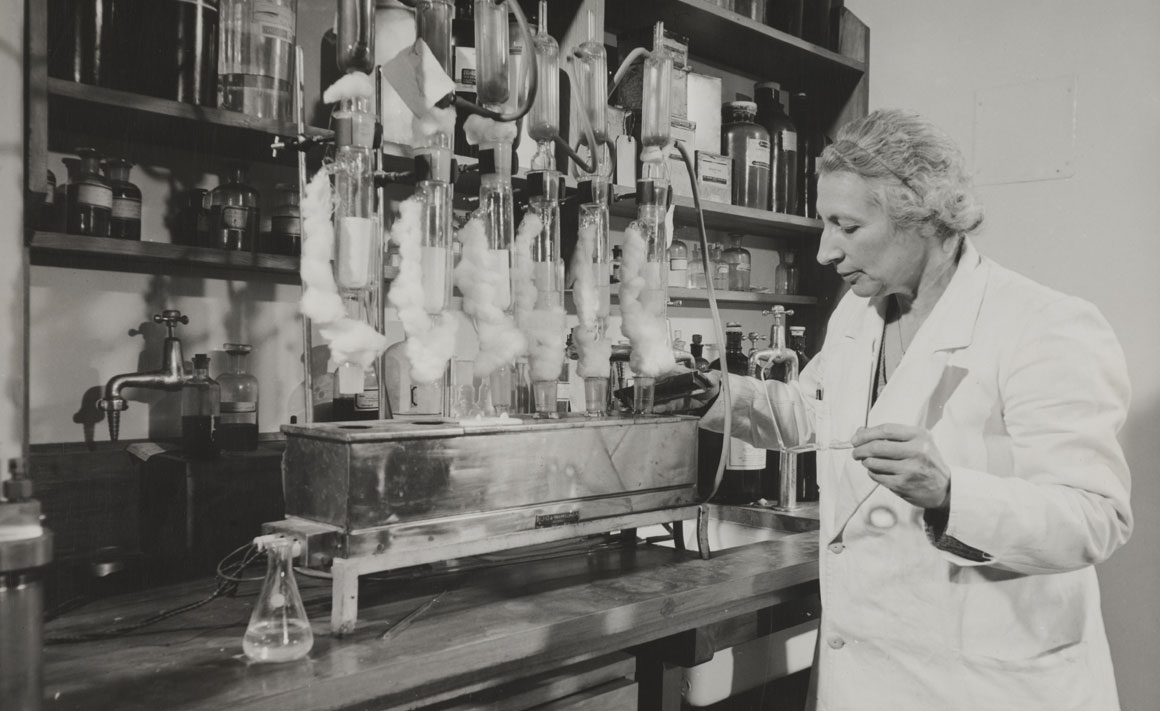
For decades Otago's people have been instrumental in helping to address the health challenges of their time.
One such person was Dr Muriel Bell, who, during a long and distinguished career as a medical researcher and nutritionist, was committed to improving public health and well-being through better diet.
Her work contributed to the introduction of iodised salt to reduce the incidence of goitre, and fluoridated water to fight dental decay. She made recommendations to government about food rationing during World War Two, was a staunch advocate of school milk, devised new formulas for babies with milk allergies, and improved the quality of New Zealand bread by encouraging bakers to use flour with a higher vitamin B1 content.
Through her many Listener articles, radio broadcasts and other publications she educated the New Zealand public about the benefits of eating fruit, vegetables, fish and cereals and to cut down on sugar, fat and meat. She undertook research into cholesterol and heart disease and, ahead of her time, campaigned for the collection of data on obesity.
Banner: Dr Muriel Bell, Prime Minister's Department photograph, Box-184-127, Hocken Collections Uare Taoka o Hākena.
Today
1
Flu targets
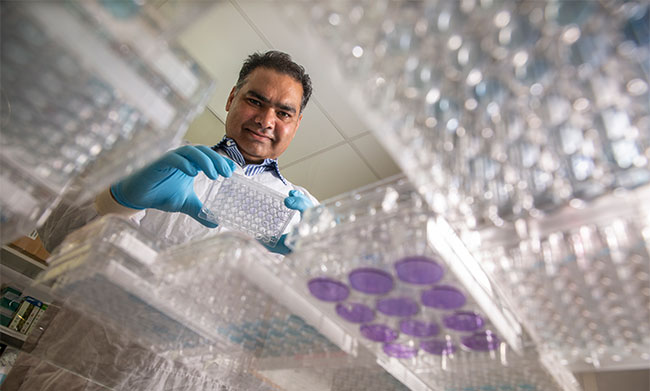
Dr Matloob Husain: His lab is working to identify the host components that are important for influenza to survive.
A walk along a beach littered with dead birds prompted a “eureka” moment for Otago alumnus and internationally acclaimed virologist Professor Robert Webster. This was just after the 1957 Asian flu pandemic and he wondered if those birds had also died of flu. Webster and his colleagues subsequently confirmed that aquatic birds are, indeed, reservoirs of influenza viruses, including the H5N1 virus, now commonly known as bird flu.
Webster's ongoing research has contributed to a better understanding of influenza and the evolution of new pandemic strains, and the development of more effective vaccines. He has also established a lasting legacy at the University of Otago: the Webster Centre for Infectious Diseases which is providing a research platform for the likes of Dr Matloob Husain who researches and lectures in virology.
"There is no guarantee as to when and where the new influenza A virus is going to emerge. It will emerge somewhere, somehow and be a problem. We need to be ready."
"Influenza has been around for a long time and it will be around for a long time," says Husain.
His main focus is type A influenza – the one which, in addition to seasonal epidemics, causes the likes of the devastating 1918 pandemic and zoonotic outbreaks in which an animal or bird flu infects humans.
Several key features of type A influenza make it difficult to deal with, including an error-prone genome that allows influenza to evolve quickly.
"Evolution is very important for many viruses because they multiply within the host, but the host is a very hostile environment for pathogens. They have to evade that hostile environment to be able to multiply."
Another key feature is type A influenza's broad host range which includes humans, birds and other mammals such as pigs.
"Even if you could get rid of type A from the human population, it will be practically impossible to get rid of it from other hosts," says Husain.
"That constant cycle of infection between different hosts combined with the unique and error-prone genome creates a lot of opportunity for influenza to evolve. That's why we get new influenza viruses emerging and causing epidemics, pandemics and zoonotic outbreaks."
This ability to change also means there is no universal influenza vaccine and seasonal vaccines vary in their effectiveness because, by the time they are in use, the virus has evolved. "It's always one step ahead."
Such evolution is also behind the emergence of influenza viruses resistant to antiviral drugs.
Husain's lab is working to identify the host components that are important for influenza to survive. "If we can identify the most critical factors then we can develop host-directed therapies. We can exploit those host components against the virus."
Since his arrival at Otago in 2011, Husain has published a number of papers identifying a family of host proteins involved in influenza virus infection. These particular proteins have an antiviral function and help protect the infected host. Without them the infection would be even worse.
When Husain and his team manipulated those host proteins they found the virus replication went up, which means these proteins were suppressing virus infection. The virus is usually trying to destroy them to circumvent their defence, so it is important to understand how the virus gets around that.
They have published data on four proteins so far from a family of 18 and are working to identify the role of each one.
Such host-directed therapies are not new and are already used against HIV and Hepatitis C.
"If we can identify these antiviral proteins and know their function they could be targeted to enhance their function," says Husain.
"There is no guarantee as to when and where the new influenza A virus is going to emerge. It will emerge somewhere, somehow and be a problem. We need to be ready."
Funding
H.S. and J.C. Anderson Trust
Maurice and Phyllis Paykel Trust
2
Smoke and vapers
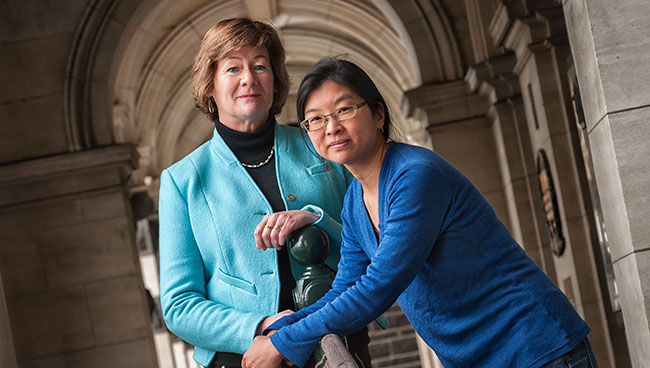
Professor Janet Hoek and Mei-Ling Blank: “We hope our findings will add a new dimension to discussions that have so far focused strongly on managing smokers' physiological cravings…”
The introduction of vaping in New Zealand has been controversial: heralded by some as a catalyst to smoking cessation yet challenged by others as prolonging the smoking epidemic.
Professor Janet Hoek (Public Health and Marketing) – who co-directs Aspire Aotearoa, a University of Otago research theme that supports the government's Smokefree 2025 goal – is leading a multidisciplinary team to examine whether and how smoking-to-vaping transitions occur.
“Examining how smokers adjust to the different hand and mouth feel of vaping, and the experience of inhaling and exhaling vapour rather than smoke, provides important insights into how smokers' experiences of vaping could be managed.
Hoek says that there is general agreement that electronic nicotine delivery systems (ENDS) – which include electronic cigarettes, vape pens and vaporisers – pose fewer health risks than smoking tobacco.
She points out, however, that smokers need to transition fully from smoking to vaping to gain physical benefits and notes that some smokers try vaping yet return to exclusive smoking, while others continue smoking tobacco alongside vaping and establish a pattern of dual use.
Research fellow Mei-Ling Blank (Public Health and Marketing), who has carried out research using “smart” cigarettes to examine smoking-to-vaping transitions, notes that the people who were able to quit smoking relatively quickly, within the first month, had a different pattern of vaping than the others.
“They started vaping sooner, vaped more than those who did not transition fully and their vaping was more evenly distributed throughout the day,” Blank says.
With former research fellow Dr Lindsay Robertson, Hoek has probed dual-use practices.
“We need to appreciate that vaping must do much more than offer an alternative nicotine source,” Hoek says. “Smokers also need to recreate rituals that offer the same satisfaction and authenticity they found in smoking.
“Examining how smokers adjust to the different hand and mouth feel of vaping, and the experience of inhaling and exhaling vapour rather than smoke, provides important insights into how smokers' experiences of vaping could be managed.
“Smoking has elemental properties of fire that smokers value and cigarettes are finite. By contrast, vaping replaces fire with technology and requires self-regulation when and how a session ends,” she explains.
Hoek and Robertson have also examined information gaps and how smokers hoping to quit via vaping could be better supported.
“Retailers have a pivotal role in advising smokers wishing to vape,” Hoek says. “People need to choose a device, learn how to use it, find a flavour that they like, find a nicotine level that satisfies their cravings and then wean themselves off nicotine. These are complex decisions and the highly variable quality of retail advice may lead to poor experiences and smoking lapses.”
Noting that anybody can sell vaping devices – corner dairies, service stations, $2 stores – Hoek argues that distribution should be limited to specialist vape stores and pharmacies, and suggests that staff should meet minimum criteria to ensure that they offer appropriate technical and cessation advice.
With Dr Tamlin Connor (Psychology), Dr Shelagh Ferguson (Marketing) and Associate Professor Lee Thompson (Population Health), Hoek and Blank are now exploring how smokers' identity positions evolve as they transition from smokers and become vapers and, potentially, vape-free.
They are working with successive groups of Dunedin smokers – from first-year university students to retired people – who each complete short daily online surveys, compile video diaries and participate in in-depth interviews spanning several months as they move from smoking to vaping.
“We hope our findings will add a new dimension to discussions that have so far focused strongly on managing smokers' physiological cravings, and will inform interventions that better support the many smokers wishing to become smokefree,” Hoek says.
Funding
Health Research Council
Marsden Fund
University of Otago
3
Beating bowel cancer
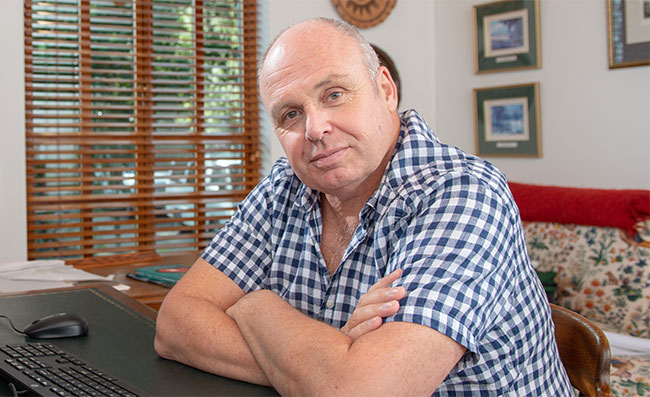
Professor Frank Frizelle: “This gives us a clue as to what is actually driving the cancer and, in doing so, it gives us a possible means of being able to manage it.”
During his medical school training, Frank Frizelle worked on farms to pay for his tuition by preparing sheep carcasses for dog food. It was there he saw sheep guts riddled with cancer. The disease fascinated him and set him wondering about whether the cause of the disease would be the same in animals as in humans.
That was almost 30 years ago. The curious medical student is now a professor and arguably the country's foremost bowel cancer surgeon and researcher. His fascination for the disease remains – as does his determination to help find a cure for one of New Zealand's biggest cancer killers.
In the past year, Professor Frizelle and his University of Otago, Christchurch research team have made two breakthroughs that will undoubtedly save lives. The first is the discovery of a toxic form of bacteria likely to trigger the process of bowel cancer. With more money and research, the discovery could result in a life-saving vaccine or early detection test.
The next step in the research programme is to study which subtypes of cancer respond best to particular forms of treatment, enabling clinicians in the not-too-distant future to personalise treatment to each subtype.
Frizelle and his team found the toxic form of a bug called enterotoxin producing a variety of Bacteroides fragilis (ETBF) in the gut of almost 8o per cent of people with a precursor to bowel cancer. Bacteroides fragilis is a common bug in our gut that, for the most part, helps with digestion and the general health of the colon. However, in some people the bug produces a toxin that disrupts cells lining the gut, beginning the process of cancer in the bowel.
In a world first, the team tracked the progress of 150 people who had undergone a colonoscopy. They genetically analysed samples of bowel taken during the colonoscopies to see if Bacteroides fragilis was present. Between 12 and 15 years after their initial colonoscopy, 79 per cent of patients with the toxic form of Bacteroides fragilis had developed low-grade dysplasia – a type of pre-cancer.
Frizelle describes the finding as a “game-changer”. “This gives us a clue as to what is actually driving the cancer and, in doing so, it gives us a possible means of being able to manage it. With further time and money, the discovery could be used to screen for people with the bug present and it could be used to develop a lifesaving vaccine.”
By testing tumour samples from more than 500 patients, the Christchurch-based research team has made another discovery that could improve cancer treatment. They have identified, for the first time, unique genetic patterns for four different subtypes of colorectal cancer and linked genetic subtypes to clinical behaviour. The findings were published in the Nature-affiliated Scientific Reports journal.
Frizelle says bowel cancer is currently treated as one disease, but scientists and clinicians have suspected many subtypes exist. Different subtypes of bowel cancer may respond better to different treatments – typically radiotherapy, chemotherapy or surgery to remove the tumour. The next step in the research programme is to study which subtypes of cancer respond best to particular forms of treatment, enabling clinicians in the not-too-distant future to personalise treatment to each subtype.
While disease is better understood and survival rates have improved, Frizelle says there is still potential to do better. New focuses for the team include understanding the role of diet in the development of bowel cancer and its possible link to growing rates of bowel cancer in people aged under 50.
Early research by the Christchurch team found rates of the disease have grown significantly in the under 50s in the past two decades. Frizelle says genetic mutation was unlikely to explain the increase in a relatively short period of time. Changes in diet, such as the greater consumption of processed food, were more likely behind the phenomenon.
They are now exploring how dietary changes, such as more fibre or iron like that found in red meat, affect bowel cancer cells. They are also investigating whether dietary factors impact production of the toxic gut bug.
As Frizelle explains, a fix is not as simple as eradicating the culprit bacteria. “We all inherit our individual make-up of gut bacteria from our mothers after birth, but diet and age have been proven to influence the health of this colony of millions of bugs. Our gut microbiome is a delicately balanced community, and there is a cause and effect scenario. If you change one bacteria it can have a negative effect on other parts of the community.”
Decades on from his farm work and medical student days, Frizelle says bowel cancer still fascinates him and provides ample challenge.
“Bowel cancer is complex, potentially avoidable, and there is vast room for improvement in how we treat patients. It also kills four times more New Zealanders every year than the road toll, but is in some ways a hidden disease and suffers from being a taboo subject area of health because people are ashamed to talk about it. I feel that there is still much work for me to do and I hope to continue to have a positive impact.”
Funding
University of Otago
Canterbury Medical Research Foundation
4
Weight training
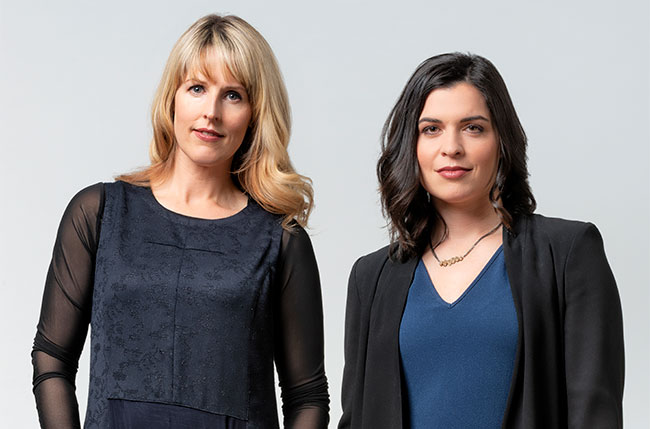
Dr Michelle Jospe and Dr Melyssa Roy: They have been investigating effective diet and exercise options for people trying to lose weight long-term.
Obesity is a huge problem for individuals and for our health system: about one third of children and two thirds of adults in New Zealand are overweight or obese and it is projected to get worse.
Researchers in the Edgar Diabetes and Obesity Research Centre at Otago have been investigating novel ways of trying to tackle this obesity epidemic.
These include the support strategies for wholefood diets, the intermittent fasting and training (SWIFT) study of practical approaches to helping people stick to healthy diet and exercise changes for a year, involving 250 overweight Dunedin adults.
One of the researchers, postdoctoral fellow Dr Michelle Jospe notes that “it seems to not matter which diet people follow, they tend to lose weight for six months and then regain that weight. So it seems that the best diet is the one people can stick to.”
“Hunger training is figuring out to eat when you are hungry versus when you are bored or tired or just because it's 12 o'clock.”
Jospe, whose PhD was on the effect of different monitoring strategies on weight, health and eating behaviour, says that they investigated four monitoring strategies: regular brief support such as a monthly chat and check-up with a nurse, daily self-weighing, tracking with an app what you eat, and hunger training Jospe, who is also a registered dietitian, says that hunger training seems to be the most promising of the four strategies for people who followed it through for a year: men lost on average 13 kilograms and women five kilos.
“Hunger training is figuring out to eat when you are hungry versus when you are bored or tired or just because it's 12 o'clock,” Jospe explains.
“We got people to measure their blood sugar for two weeks every time they wanted to eat, using a finger prick blood glucose test as an objective marker of whether their body needed food, and they could only eat if it was under a certain level.
“The idea is that they learn to recognise how they feel at that moment: when their blood sugar is that low their stomach feels rumbly or empty or whatever their symptoms were.”
She is now investigating how to get more people to follow the strategy, with the aim of having nurses in general practice offer it to overweight and obese patients.
Research fellow Dr Melyssa Roy's focus has been on the benefits of wholefood diets, intermittent fasting and high-intensity interval training (HIIT), which were the focus of her PhD thesis.
Roy says that eating a diet of predominantly wholefoods, or intermittently fasting by substantially reducing food intake for two days a week, were both as effective as a normal healthy diet in terms of weight loss over 12 months, although intermittent fasting led to slightly worse metabolic outcomes.
Roy points to mixed results with high-intensity interval training, where people chose short amounts of vigorous exercise three times a week instead of the standard guidelines of 30 minutes moderate exercise daily.
“HIIT wasn't better than normal exercise overall because most people didn't keep doing HIIT for 12 months, but the ones who kept doing it did lose more weight and reduced their unhealthy visceral fat.”
Roy, who is also a registrar in public health medicine, notes that vigorous exercise is now included as an alternative in Ministry of Health physical activity guidelines.
Roy and Jospe have written several publications based on the SWIFT study. Roy says that the common theme coming out of the research is that there is a range of effective diet and exercise options available for people to try, to find what works best for them.
Funding
University of Otago
5
Rural health champion
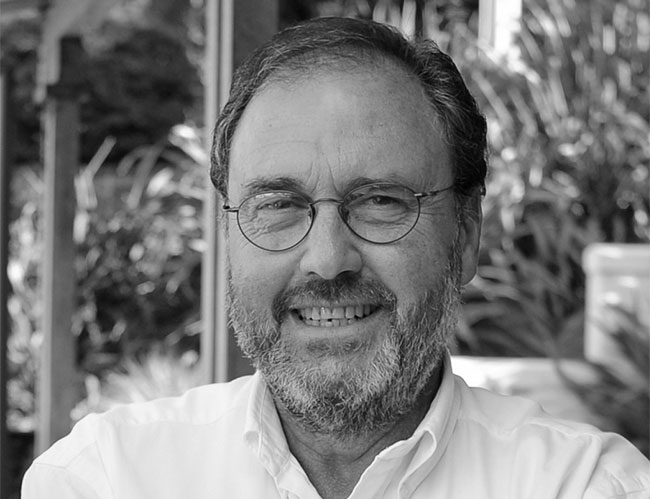
The late Dr Pat Farry: “I came to realise that, in the rural environment, we are always 'the loss of one GP' away from a crisis.”
Former University of Otago student and staff member Dr Pat Farry devoted nearly 40 years to providing rural health services and was intimately involved in rural health education for most of that time.
Born and raised in Gore in a proud Lebanese family, Farry graduated from Otago with a medical degree in 1967. Following an initial interest in surgery, he went to Queenstown as a locum GP in 1971 and stayed. After five years, he opened the Queenstown Medical Centre, at the time only the second facility of its kind in New Zealand. His wife Sue, a physiotherapist, worked next door. Farry also served two terms on the Southland District Heath Board in the 1970s.
Farry's experience as a Queenstown GP – with clinics in Glenorchy and Kingston at the far ends of Lake Wakatipu – fed his passion for rural medicine. He noted that outsiders found it funny that Queenstown was classed as rural, but it was two-and-a-half hours from specialist care and GPs had to deal with emergencies: the couple's Combi van served as an ambulance, in high demand during the ski season.
An evaluation of the [rural medical immersion] programme after 10 years confirms that it is particularly effective in influencing students with urban backgrounds towards working in rural or provincial centres.
Farry renewed his association with the University in 1980, when he began lecturing in what became the Department of General Practice and Rural Health within the Dunedin School of Medicine. He subsequently held various positions within the department while continuing as a GP in Queenstown. He reckoned that he travelled between Queenstown and Dunedin about 1,600 times during his career.
Farry later reflected: “I came to realise that, in the rural environment, we are always 'the loss of one GP' away from a crisis.” Noting that most student doctors trained almost exclusively at universities and teaching hospitals, he felt that rural communities would continue to struggle to attract doctors if medical students had little or no exposure to life in rural general practice.
He responded in 2000 by initiating the seven-week rural health attachment for all fifth-year medical students, to try to encourage more doctors into rural practice. He later described how the initially resistant students went out in groups of three to rural teaching centres and came back saying that it was the best teaching and learning they had experienced.
Dr Martyn Williamson, an Alexandra GP who helped set up and now runs the rural health attachment programme, says that surveys have since confirmed its positive impact on recruitment and, for example, in giving students a greater understanding when they later work in hospitals and deal with rural practitioners.
Farry wanted to go further and set up a three-year programme for fourth-, fifth- and sixth-year medical students to immerse themselves in rural general practice, but the proposal foundered in a sea of health and education ministry bureaucracy.
After much lobbying by Farry, the government finally approved a one-year rural medical immersion programme, which began in 2007 as a pilot, with Farry as the programme director. While most fifth-year students spent the year in teaching hospitals, six students immersed themselves for the year in two rural centres: Queenstown, where Farry was based, and Greymouth.
Farry later recalled: “They had all expressed an interest in rural health as a career, had shown flexibility and resilience as students, had a track record of self-directed learning and an acceptable academic record. We were very lucky to get such good students: adventurous and willing.”
The number of students quickly increased to 12 and then to 20 under the innovative and successful scheme, and the number of teaching centres to six – Balclutha, Blenheim, Dannevirke, Greymouth, Masterton and Queenstown – linked by a videoconference tele-medicine network.
Dr Branko Sijnja, a long-serving Balclutha GP and director of the rural medical immersion programme, says that an evaluation of the programme after 10 years confirms that it is particularly effective in influencing students with urban backgrounds towards working in rural or provincial centres.
Farry also established a rural postgraduate programme in 2003 that now provides targeted postgraduate training for doctors working in remote general practice and rural hospitals across New Zealand and parts of the Pacific, in collaboration with the New Zealand College of General Practitioners.
Farry's interest in rural health research impinged on his extensive overseas holidays, during which he gained insights into how rural doctors were educated and how they operated: observations he adapted to New Zealand conditions.
Researchers such as senior research fellow in rural health, Dr Fiona Doolan-Noble, are today building on that work, exemplified by a proposed study of the psychosocial impact on rural communities of the cattle disease mycoplasma bovis.
Among his other enduring contributions to the University, Farry founded the student-run Matagouri Club, which organises educational and social events for undergraduate students interested in rural medicine.
“There was always this warm, positive vibe about him,” Williamson recalls of Farry, “and an open-mindedness to ideas and determination to see things through.”
Farry received many accolades during his lifetime, culminating in being invested with a New Zealand Order of Merit in September 2009 for services to rural medicine. He died suddenly the following month while undertaking a short GP locum in Twizel, aged 65.
The Pat Farry Rural Health Education Trust was established following his death to continue his work through fundraising to provide grants and scholarships for continuing education or research in rural health, notably in providing travelling scholarships to sixth-year medical students to pursue rural health educational experiences overseas. Since 2011, 26 medical students have benefited from the trust's scholarship programme, with the amount in grants and scholarships awarded now reaching $100,000.
The University's various rural health initiatives are being brought together under a new Section of Rural Health, headed by Dr Garry Nixon, a rural hospital generalist at Dunstan Hospital in Clyde who has led the rural postgraduate programme since 2013.
“It will be an outward looking unit, the beginnings of a virtual campus, with about 30, mainly part-time, faculty dispersed across rural New Zealand,” Nixon explains.
Fittingly, it will embrace many of the programmes Farry established and be based on a model he developed.